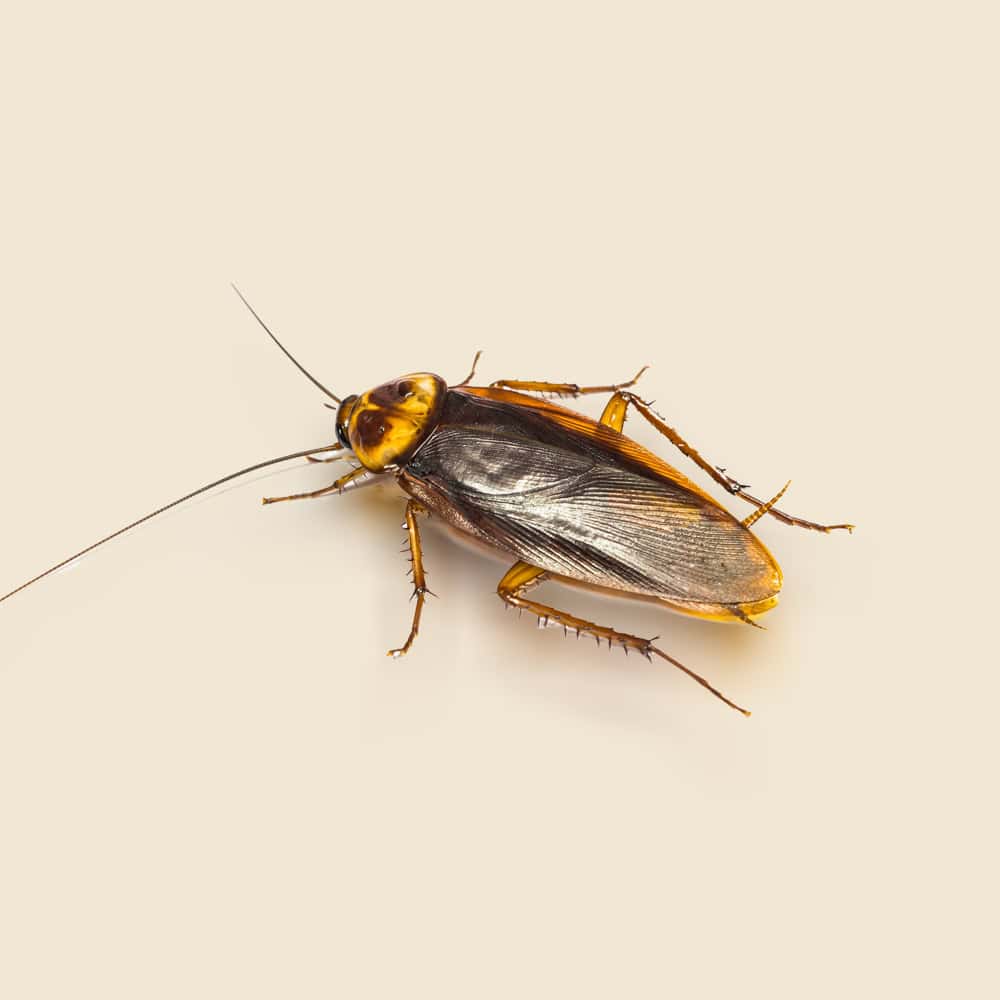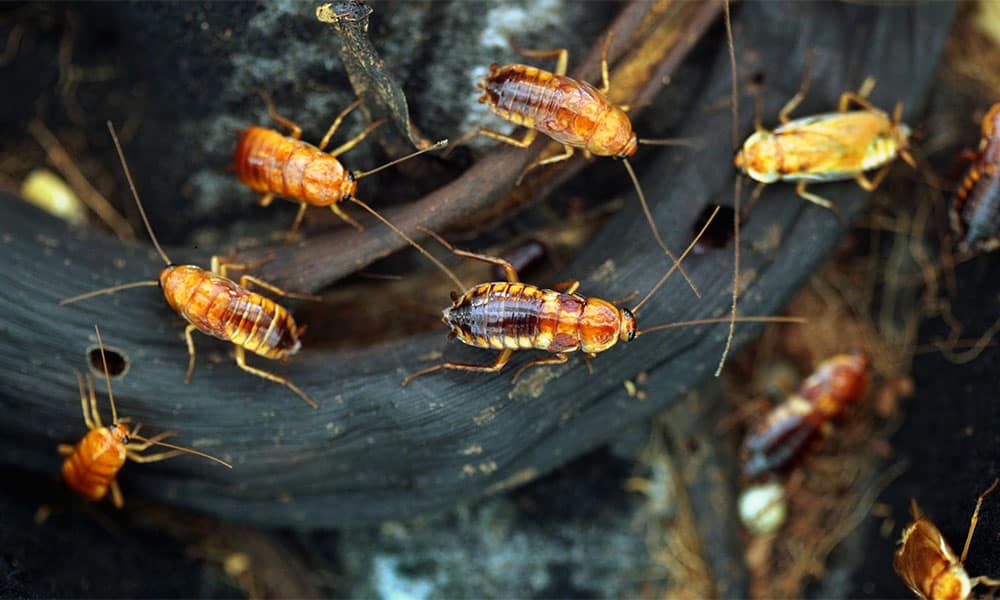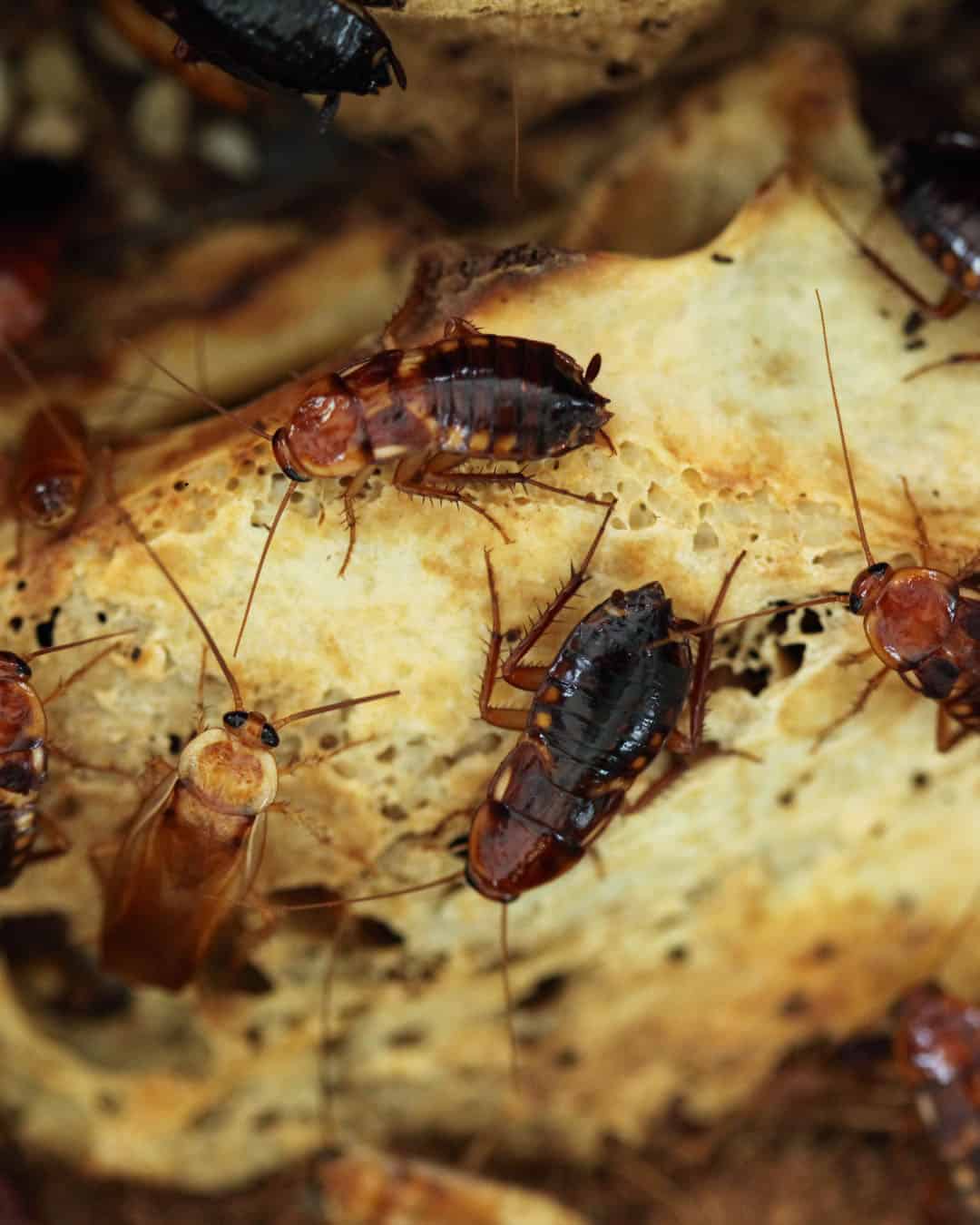Turkestan Cockroach Facts & Information
Turkestan cockroaches, also known as "red runners," are invasive pests that have become increasingly common in many parts of the United States. Known for their rapid spread and preference for outdoor environments, these cockroaches can become a nuisance when they invade homes and businesses.

Blatta lateralis
What You Need To Know About Turkestan Cockroaches
What do Turkestan cockroaches look like?
Turkestan cockroaches (Blatta lateralis) exhibit sexual dimorphism, meaning males and females look distinctly different. Males are about 1 inch long, with a reddish-brown body and long, fully developed wings that extend beyond the abdomen. Females are slightly shorter, with a darker, almost black body, and their wings are shorter and more rounded, not extending beyond the abdomen.
What do Turkestan cockroaches eat?
Turkestan cockroaches are omnivores and will feed on a variety of organic materials. Their diet includes decaying plant matter, garbage, pet food, and other food scraps. They are opportunistic feeders and can survive on a wide range of materials.
What sort of habitat do Turkestan cockroaches live in?
Turkestan cockroaches prefer warm, arid environments and are commonly found outdoors in leaf litter, compost piles, and under stones or debris. However, they can also be found indoors, particularly in basements, crawl spaces, and other areas where they can access warmth and food. They are more common in the southwestern United States but have been spreading to other regions.
How do Turkestan cockroaches commonly behave?
Turkestan cockroaches are primarily nocturnal and are more active at night when they search for food. They are fast-moving and can quickly infest an area. Females are less mobile than males and tend to stay closer to their nesting sites. This species is known for its rapid reproduction, with females producing numerous egg cases, each containing many eggs.
Did you know this about Turkestan cockroaches?
Turkestan cockroaches have been increasingly replacing the oriental cockroach in some areas of the United States due to their faster reproduction rate and preference for warm climates. They are often sold as feeder insects for reptiles, which has contributed to their spread in non-native areas. Despite their rapid spread, Turkestan cockroaches are relatively easy to distinguish from other species due to the noticeable differences between males and females.
Understanding Turkestan Cockroach Infestations
Understanding Turkestan cockroach infestations is key to effective management. Turkestan cockroaches are slightly larger than German cockroaches, with males being about 1 inch long and females slightly shorter. Males have long, reddish-brown wings, while females are darker and have shorter wings. These cockroaches are typically found outdoors in warm, dry climates but can enter buildings in search of food and shelter. They are particularly attracted to lights at night, making them more visible than other cockroach species.

How Hearts Handles Turkestan Cockroach Treatment
Hearts Pest Management employs an integrated pest management approach to handle Turkestan Cockroach infestations.
Turkestan Cockroach Inspection
Turkestan Cockroach Treatment
Turkestan Cockroach Prevention
Educational Resources

Think You Might Have a Turkestan Cockroach Infestation?
At Hearts Pest Control, we understand the challenges associated with Turkestan Cockroach infestations and are here to provide professional solutions tailored to your needs. Flourishing in warm and humid climates, they are prevalent in many regions, including San Diego County, Orange County, and Los Angeles County.